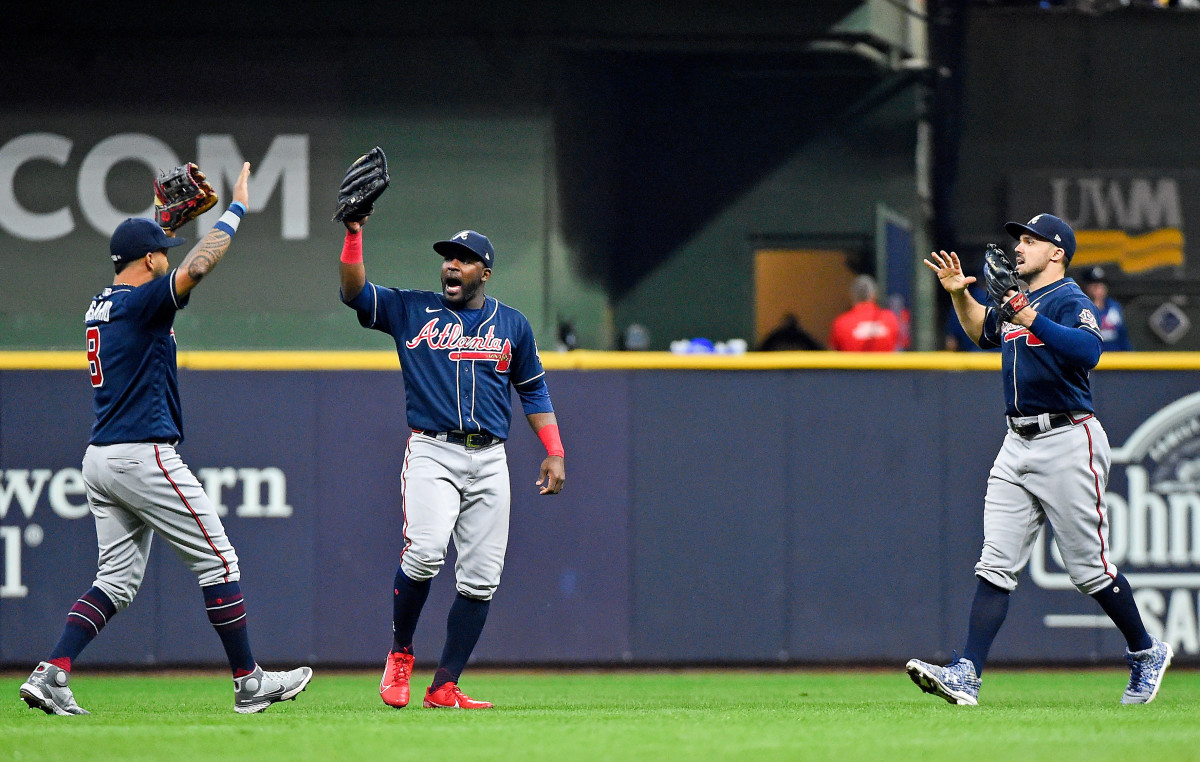What Separates the Phillies and the Braves? It All Comes Down to July

Last night, the Atlanta Braves won the NLDS, defeating the Milwaukee Brewers to once again advance to the NLCS to take on the winner of the San Francisco Giants-Los Angeles Dodgers series.
So, how did they do it?
The National League East standings following the MLB All-Star break found the New York Mets in first place at 48-41, with a 3.5 game lead over the Philadelphia Phillies and 4.5 over the Braves.
The Braves' NLDS opponent? They were 54-39, with a comfortable five-game lead over the Cincinnati Reds after returning from the All-Star break.
At this point, the Mets and Phillies were the only two teams in the NL East at .500 or above. The Braves were below the .500 mark at 44-46. However, the NL East was still wide open with about 72 games left to play, and the Braves were well aware of the situation.
This is one of the reasons why Atlanta came out swinging at the trade deadline, the other being their young phenom outfielder Ronald Acuña Jr. going down for the season with an ACL tear on July 10.
A few weeks prior to the deadline, Braves General Manager and President of Baseball Operations Alex Anthopoulos went out and acquired outfielder Joc Pederson from the Chicago Cubs in exchange for Bryce Ball.
On July 30, Anthopoulos' first trade deadline acquisition was Eddie Rosario from the Cleveland Indians in exchange for Pablo Sandoval.
Next, Atlanta brought back outfielder Adam Duvall from the Miami Marlins in exchange for catcher Alex Jackson.
To wrap up their day, Anthopoulos secured another outfielder in Jorge Soler from the Kansas City Royals in exchange for RHP Kasey Kalich.
And finally, RHP Richard Rodríguez also joined the Braves at the deadline, sending right-handers Bryse Wilson and Ricky DeVito to the Pittsburgh Pirates.

While the Braves added outfield depth and another bullpen arm, the Phillies acquired starter Kyle Gibson and closer Ian Kennedy from the Texas Rangers in exchange for pitcher Spencer Howard. The trade deadline also saw Freddy Galvis return to the Phillies after the club acquired him from the Baltimore Orioles.
Each of the Braves' deadline acquisitions proved to be monumental for the team. In the second-half, Rosario hit to the tune of .271/.330/.573, Duvall hit 19 home runs and drove in 51 runs, and Soler posted a .911 OPS with 20 homers and 40 RBI. Their offensive production saw the Braves rise in the NL East standings as they embarked on a nine-game winning streak in August.
Atlanta soared and posted a second-half record of 44-28, propelling them to yet another NL East title, all without Acuña Jr. Meanwhile, the Phillies went 38-36 in the second-half.
Despite Bryce Harper having one of the best second-half performances that baseball has ever seen, with a league-leading OPS of 1.188, 20 homers, and 50 RBI, it didn't mean much when the rest of the lineup bat an abysmal .688 OPS during the same span.
Had Philadelphia come down harder at the deadline, perhaps they would have had a better shot at securing the NL East title and a playoff berth for the first time in a decade. They weren't mathematically eliminated until the last week of the season, meaning the NL East was truly up for grabs down the stretch.
And now the Braves are on their way to the NLCS again, with their sights set on an NL pennant, and those bats they acquired in July being the difference for them.
In the NLDS, Rosario posted a .308 average with four hits and two RBI, while Duvall hit .286 with a triple, and Pederson batting a whopping .429/.429/1.286, with a 1.714 OPS, two homeruns and five RBI as a pinch-hitter. Pederson's three-run blast led the Braves to victory in Game 3.
The Phillies could have taken advantage of a wide-open NL East, but injuries, the rest of the lineup outside of Harper not producing, and not acquiring depth at the deadline killed them. Who would have thought that Freddy Galvis' bat alone wouldn't be enough to get the Phils over the hump? (*sarcasm intended*)
Ultimately, President of Baseball Operations Dave Dombrowski and the Phillies need to care more about building a winning team and environment moving forward, otherwise, they will quickly be left behind just as they were in 2021.
More From SI's Inside The Phillies:
- How Should the Phillies Plot Their Offseason Plans?
- Season in Review: Andrew McCutchen
- Arbitration Projections: Who Will the Phillies Keep?
Make sure to follow Inside the Phillies on Facebook and Twitter!
